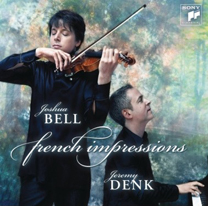I must feel some extreme subconscious need to “explain Falstaff,” because this morning I awoke from a vivid dream where I was doing just that. At an upright piano, in a beautifully furnished room (seemingly drawn from the set of the WB show Charmed), I was explaining to an unknown woman the beauties of Verdi’s only comic opera. Feeling like my audience wasn’t quite getting it, I pointed to the score to show one of Verdi’s incomparable markings. I was translating from Italian, a language I don’t know … “Look, here it says to ‘sing as though it were an aria written on an old memo pad.'” Somehow I attempted to demonstrate this at the piano; at that point, the dream became too impossible even for a dream, and I woke up.
Last night I was walking down the street (a memory which now seems like a dream) and I found myself unable to locate the downbeat in the Sarabande of the 6th Partita. Somehow the piece, which I have played so often, has become worn at the edges: the barlines have rubbed off. I placed the score on the piano this morning, and just looked, and played little bits, with their meters intact, reasserted. Clear as day! Though when I played them, they threatened to dissolve again, they wanted to disappear (just like my dream’s bizarre reality wanted to evaporate). I thought through the whole thing, the pulse and its disappearing act, while I washed the dishes. Hooray.
Even last night on the street, adrift without the meter, I thought through the pitches, trying to clear away the undergrowth (all the ornaments which “clutter it up”, which make the meter and the structure opaque, distant): trying to hear only this recurring motive (obsessive, idee fixe) of the falling second (the first motive of the piece … and a symbol of pathos), and the way Bach plays on the two notes, perversely resisting any too-clear direction, wandering over them, only allowing them occasionally to accumulate into larger sequences (2+2=3 in this musical language, two falling seconds makes a third, two thirds makes a fifth)…. There is a wonderful moment towards the end–when one might get distracted by the top voice–where the tenor emerges with a sequence of chromatic versions of this motive (E to D-sharp, to D-natural, to C-sharp, to C-natural). Every time I come at this piece, this place tugs at me, this tenor voice seizes my attention… and every time I get closer and closer to letting it dominate, to “understanding it.” But something about the piece, the way it is written, resists this reduction to “truth.” Is it my laziness or Bach’s wiliness? I know, though, that i want this tenor voice to be the fundament of this passage, its entrance to be a climactic summary, and the hemiola that follows to be “just” closing, “just” resolution …


